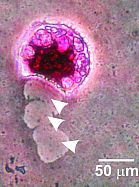About Us
Osteoclasts are the cells responsible for bone destruction in many diseases such as osteoporosis, rheumatoid arthritis, periodontitis and bone metastases. We study how osteoclast formation, activity and survival are regulated in physiological and pathological situations. In addition, we are interested in understanding the interactions between osteoclasts and their anatomical neighbors, such as osteoblasts, hematopoetic cells and invading cancer cells.
Main research themes:
- Regulation of osteoclasts, osteoblasts and their interaction
- Regulation of energy metabolism during osteoclast lifespan
- Mathematical modeling of bone homeostasis
- Metastatic cancer and bone cells
- Osteoclasts in arthritis
- Effect of biomaterials on bone cells
- Regulation of cytosolic free calcium concentration in osteoclasts and other cells














